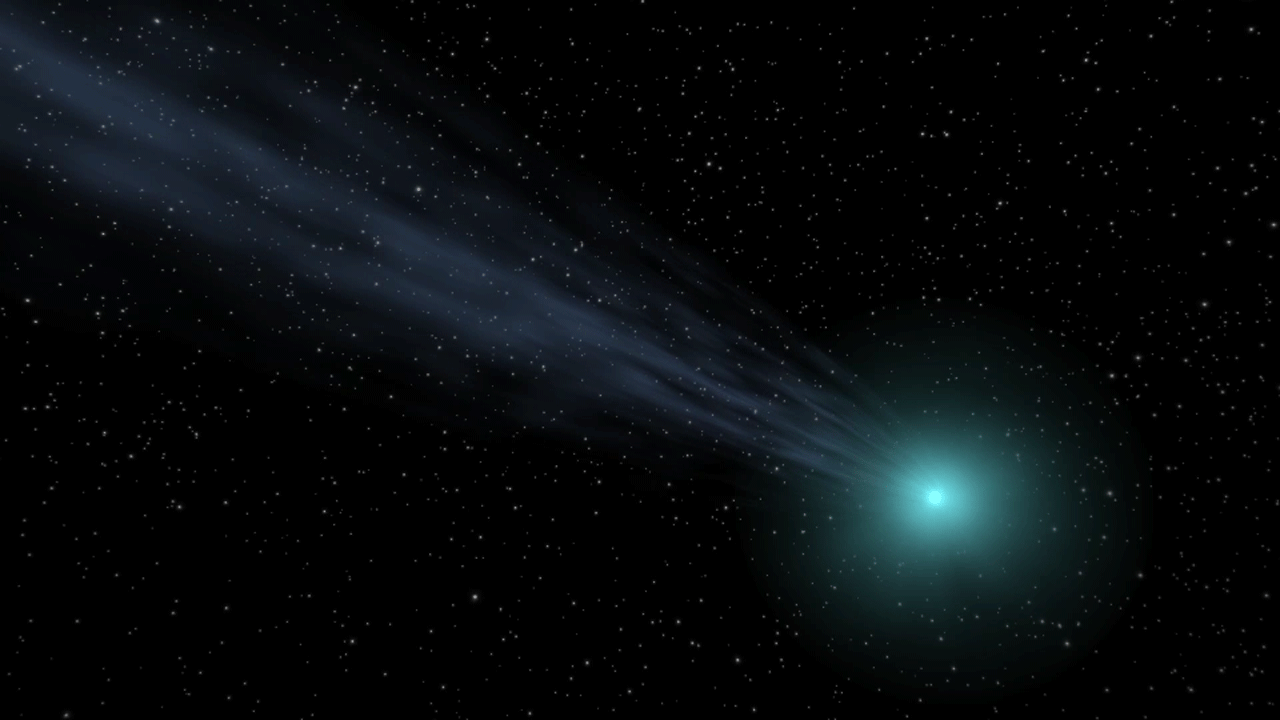Tiny Satellite Captures Rare Green Comet From Space [Video]
KEY POINTS
- Comet C/2033 E3 (ZFT) last passed the Earth 50,000 years ago
- Japan's EQUULEUS cubesat caught a glimpse of it
- EQUULEUS was one of the cubesats launched during the Artemis I mission
A tiny satellite that launched along with the Artemis I mission has captured a pretty special view. It recently spotted the rare green comet that hasn't been seen in thousands of years.
Comet C/2022 E3 (ZTF) has been making the news rounds of late, and for good reason. Discovered by scientists in March 2022, the comet has recently been making an impressive appearance in the Earth's skies.
The last time that it passed by the planet was said to be 50,000 years ago.
The EQUUEUS Cubesat (EQUilibriUm Lunar-Earth point 6U Spacecraft) by the Japan Aerospace Exploration Agency (JAXA) and the University of Tokyo also got a glimpse of the special view.
On Tuesday, the cubesat team shared the resulting footage of Comet C/2022 E3 as captured by the EQUULEUS. In it, one can clearly see the comet as the bright light moving across space, with a blanket of stars behind it. Although one cannot see its iconic green hue, the footage certainly captures the magnificence of the celestial body.
"EQUULEUS successfully photographed Comet ZTF (Comet C/2022 E3) from space!" the EQUULEUS team noted on Twitter. "EQUULEUS is sailing toward the Lunar Lagrange point, and these series of images were taken by calculating the timing and direction from the relative orbits of the comet and EQUULEUS."
EQUULEUS successfully photographed Comet ZTF (Comet C/2022 E3) from space!
— EQUULEUS (@EQUULEUS_en) February 21, 2023
EQUULEUS is sailing toward the Lunar Lagrange point, and these series of images were taken by calculating the timing and direction from the relative orbits of the comet and EQUULEUS.#cometztf pic.twitter.com/X8anhzNTzP
EQUULEUS reportedly photographed the comet for several hours on Feb. 12 with a shooting interval of about 10 minutes. At the time, it was some 69.45 million kilometers (about 43 million miles) away from the comet and 0.34 million kilometers (about 211,000 miles) away from the Earth.
At just 10 x 20 x 30 cm in size and 11.5 kilograms in weight, the cubesat certainly captured a pretty impressive sight. Previously, it also captured stunning photos of the surface of the moon.
Other images of the far side were successfully taken and were found to be at approx. 110-160°E. The images show craters of various sizes (1st and 2nd images) and the Mare Moscoviense (2nd image). 3 photos are superimposed on the lunar surface (3rd image). https://t.co/65huJ6EOuX pic.twitter.com/FSHBVO9sDB
— EQUULEUS (@EQUULEUS_en) November 24, 2022
EQUULEUS was only one of quite a few tiny satellites that hitched a ride aboard the Space Launch System during the Artemis I launch in November.
Apart from EGUULEUS, which has the primary goal of "demonstrating trajectory control techniques exploiting Sun-Earth-Moon dynamics," other cubesats on the mission, for instance, include the Lunar IceCube. This cubesat, for its part, aims to investigate water (ice) on the surface of the moon, thus potentially setting the stage to aid astronauts in future missions.

© Copyright IBTimes 2025. All rights reserved.






















